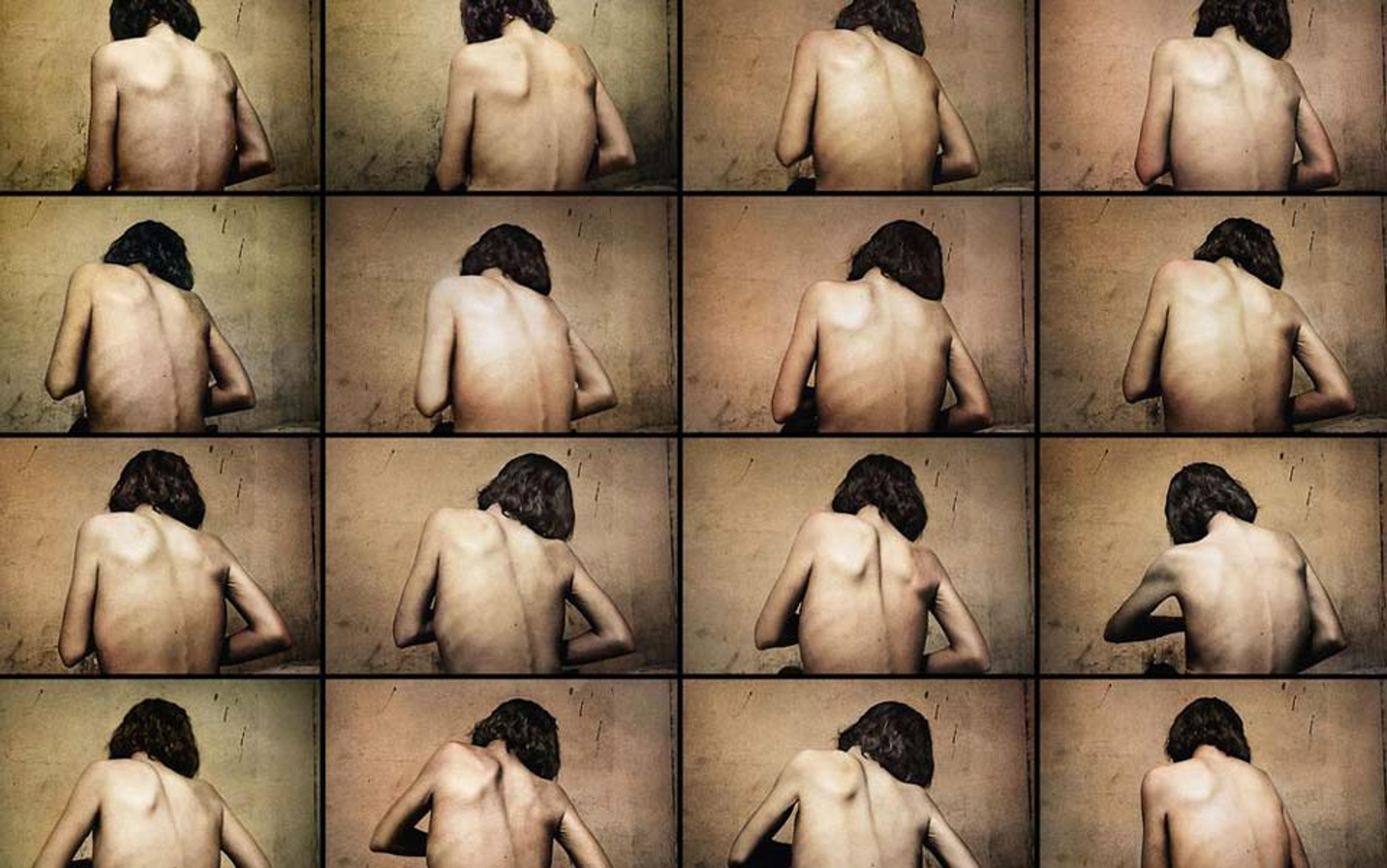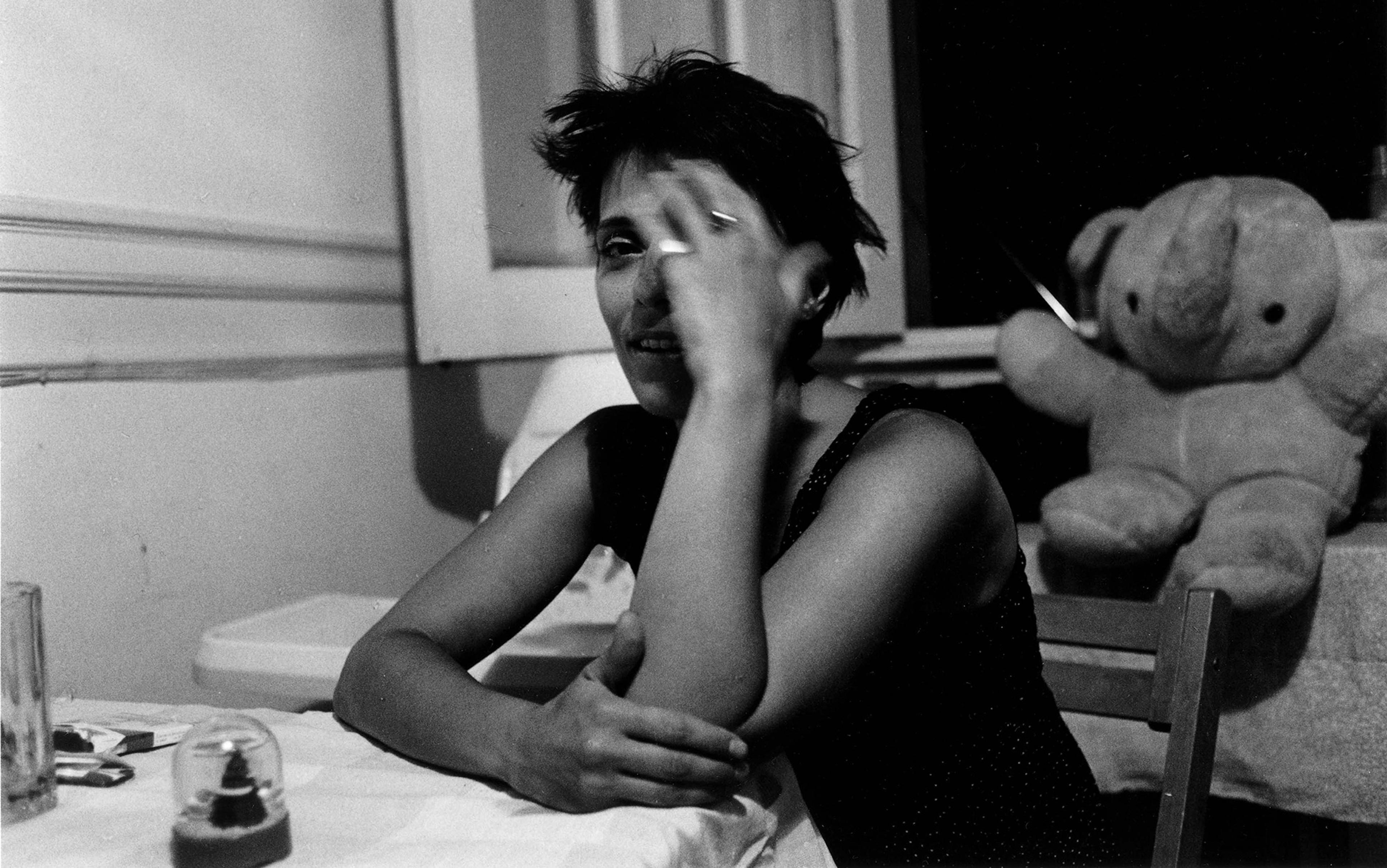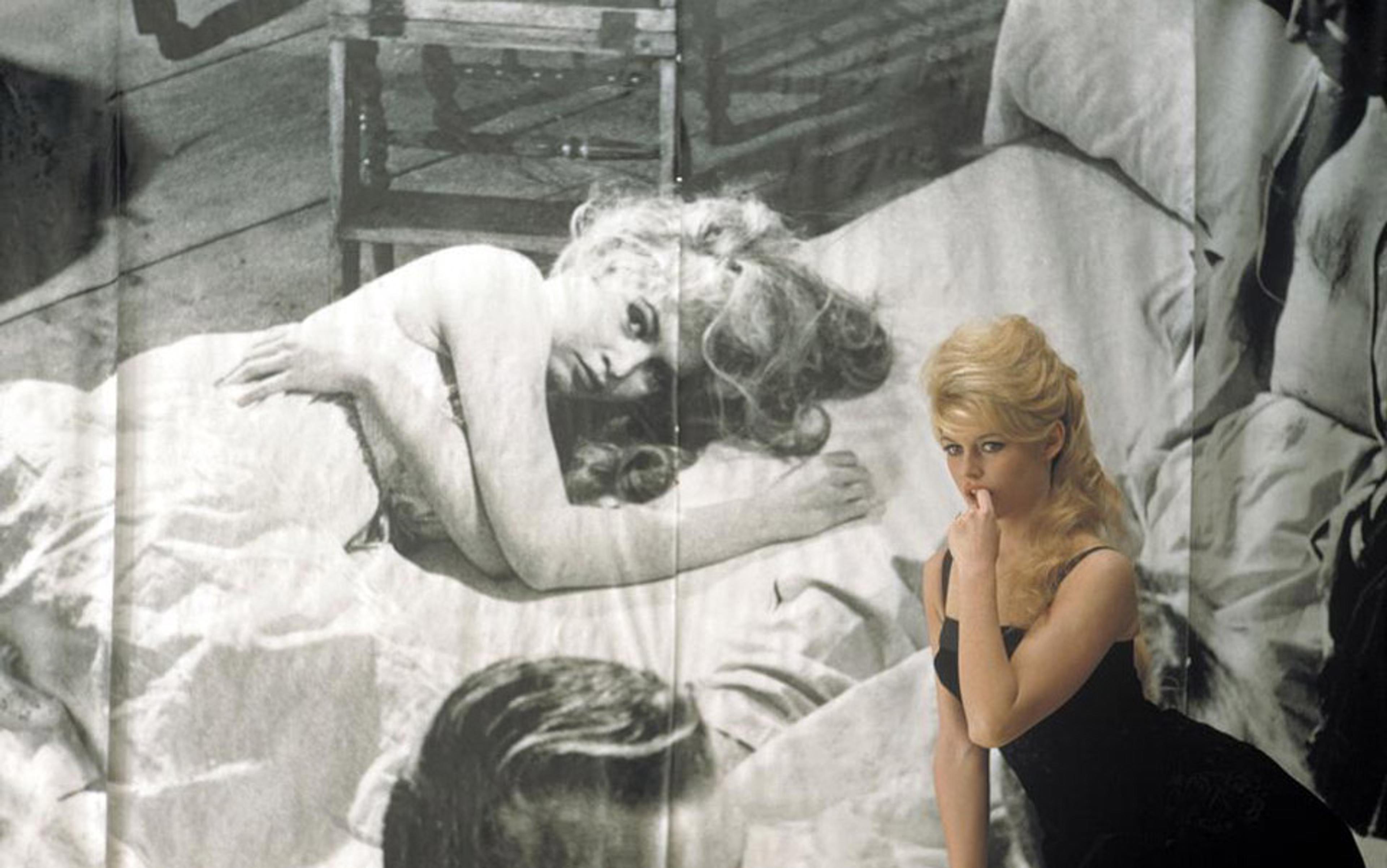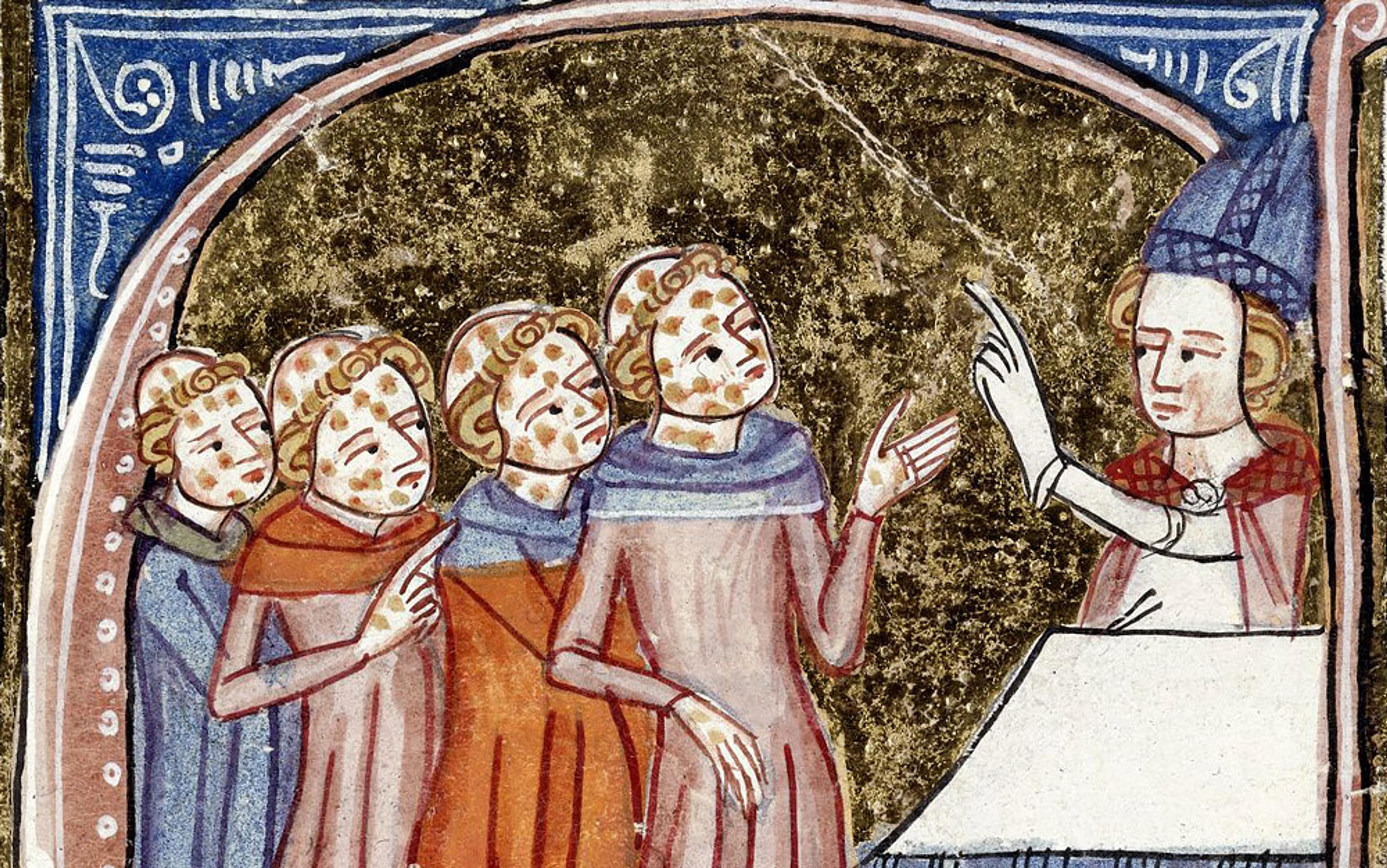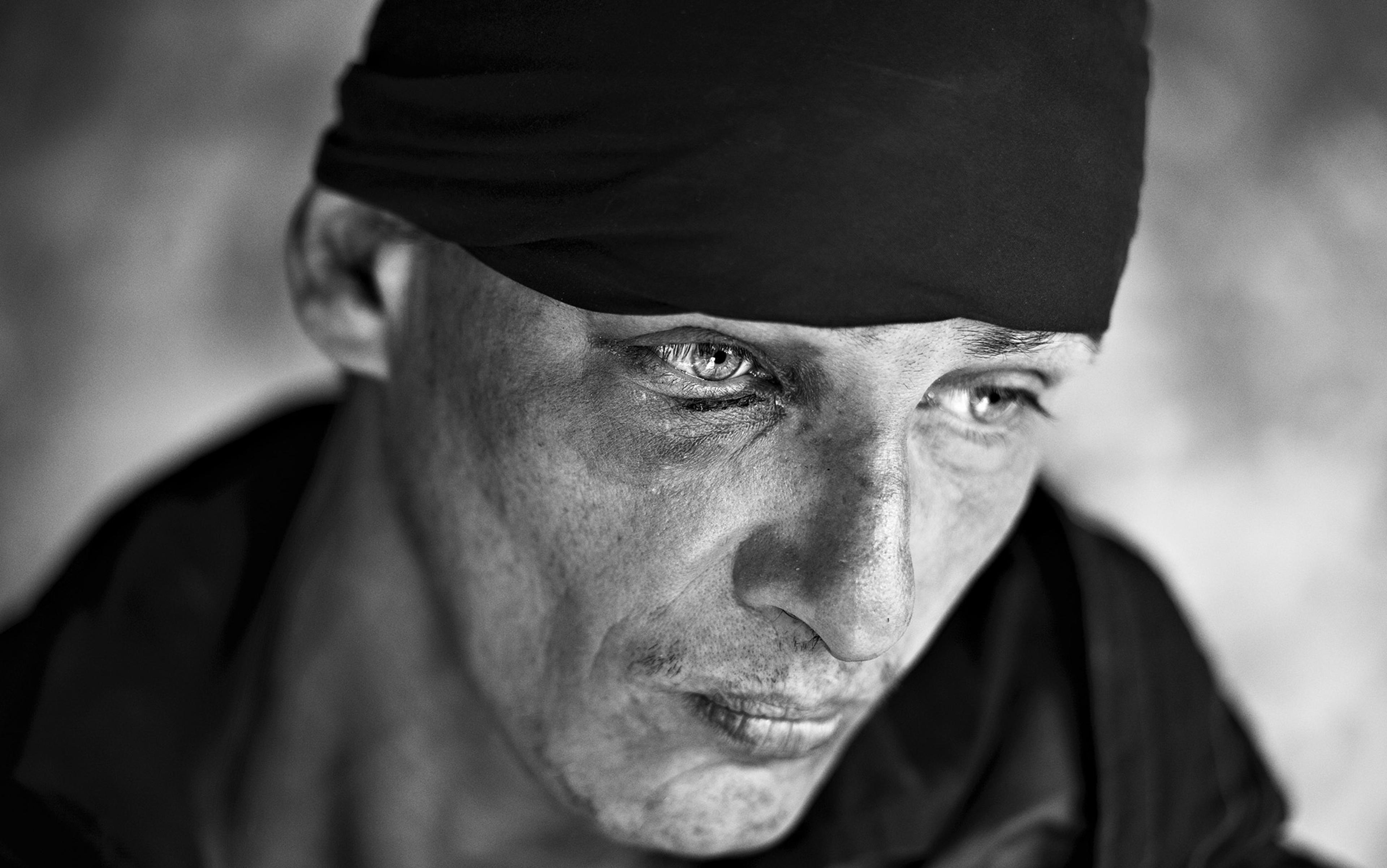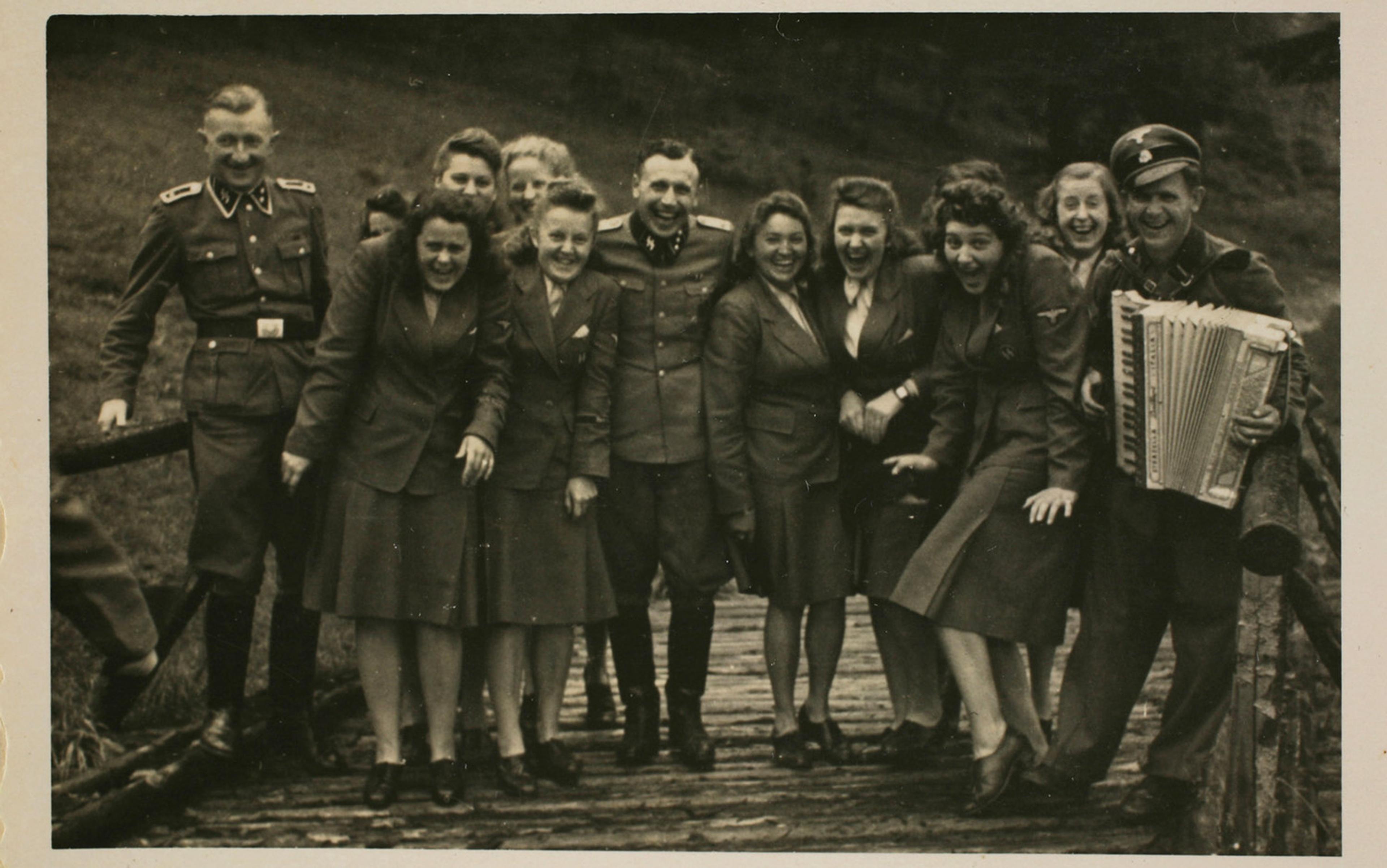Every human being has a relationship with food, some of it positive, some of it negative, but ultimately it’s all about emotion and feeling.
– From Heston Blumenthal’s foreword to Gastrophysics: The New World of Eating (2017) by Charles Spence
A few years ago, I found myself giving a lecture in the sumptuous 17th-century chapel at the École des Beaux-Arts in Paris – not my usual sort of venue but apt, I suppose, since my topic was the neuropsychology of selfhood, and matters of body and soul were up for discussion. The building was completed in 1619, the year that René Descartes had his famous three dreams – divinely inspired visions, he thought, that revealed his purpose in life and set him on a quest for infallible knowledge of the world. In line with his Catholic beliefs, Descartes drew a firm distinction between body and mind. The body, like any other physical object, is made of material stuff, whereas the mind (spirit or soul) is a nonmaterial entity, a different order of stuff altogether, capable of interacting with the physical world but separate from it. This nonmaterial soul, Descartes believed, is unique to humans, and through it we transcend our animal nature. Lacking souls, other animals are mere automata. A dog yelping in pain is like the chiming of a clock.
Neuroscience has no place for the spooky soul stuff, so, there in the chapel, amid the grand statuary and the Catholic iconography, I was casting myself as a renegade priest delivering a sermon, contra Descartes, on the non-existence of the soul. Halfway through my sermon, a latecomer – a tall, skeletally thin young woman, dressed all in black – paraded down the central aisle and found a spare seat in the front row. When I was done and gathering my notes, she approached me at the lectern. Close up, I could see the fine, downy hair on her hollowed cheeks – lanugo – and the exposed mechanics of the musculature around her mouth as she spoke. I took a discreet step back when I caught a whiff of her bad breath.
The signs of anorexia nervosa were unmistakable – a ghastly case, too. She had the aura of death about her, but had good news for me. There is, after all, a true spiritual dimension to human existence, she said. Pure consciousness extends beyond brain and body, in fact, it infuses every atom in the cosmos. She knew this because she had experienced it. Undertaking long, solitary, forest retreats, going for days without food, and driving herself physically to the point of exhaustion, she’d entered higher states of consciousness and felt the presence of the divine spirit that pervades the Universe. I’ve had a number of such conversations with people who see me as an irredeemable reductionist and who, in some cases, want to save my soul, but she was just giving me the facts of the matter. What struck me was the startling counterpoint of her claims to spiritual enlightenment and the dire state of her body. It was as if, reverting to Cartesian ways of thinking, a voracious soul was somehow consuming the physical substance of its host, like a parasitic wasp devouring a living caterpillar from the inside.
I gained some limited experience of people with anorexia as part of my generic training in clinical psychology but, frankly, I am now sorry to say, I found them tiresome: I’d just finished a placement at a neurorehab centre working with people who were struggling to adjust to the cruel effects of stroke, traumatic brain injury or some other neurological catastrophe. They had what I considered to be ‘real’ problems. Now here were these (I thought) precious young women just refusing to eat. There was nothing about them to ignite my scientific imagination or any clinical enthusiasm. Attempts to explain the condition were couched either in the mumbo-jumbo lingo of psychoanalysis (food refusal as a defence against an unconscious wish for oral impregnation – really?), vague stuff about family dynamics, or feminist sociocultural analyses, which, at that time, were some way off my intellectual radar. Mainstream approaches to treatment were largely atheoretic, pragmatic and boiled down, one way or another, to: ‘Make them eat.’ There were far more interesting things to think about.
But my encounter with the emaciated Parisian mystic kindled a curiosity, and I came to realise that anorexia fell within range of the questions that had always interested me, questions that, inevitably, loop back to Descartes: the relation of mind and body; selfhood; mortality; divinity. I began to wonder if this bizarre disorder might somehow be tied in with those Cartesian preoccupations. Might it even be construed as a battle between body and soul, or at least between body and something as close to ‘soul’ as my naturalist convictions would allow?
By chance, I came across a copy of the book Holy Anorexia (1985) by the historian Rudolph Bell, and found that self-starvation, sometimes to the point of death, was quite common among female mystics across Europe from the 13th century on. The phenomenon came to be known as anorexia mirabilis. Considering holy women on the Italian peninsula alone, Bell notes that, between 1200 and the late-20th century, some 261 women were formally recognised in the Bibliotheca Sanctorum as, ‘saints, blesseds, venerables, or servants of God’. For around a third of that number, the historical record is too meagre to draw conclusions about eating behaviour but, according to Bell, more than half of the remaining 170 or so showed clear signs of anorexia. The lives of dozens of these women – Angela of Foligno, Colomba of Rieti, and Clare of Assisi among them – are documented in substantial detail, and they emerge as controversial and significant figures whose influence would reverberate down the years. Their tombs became sites of pilgrimage, their relics were prized and venerated, and they entered the Catholic narrative as heroic role models. Believers listened awestruck as preachers recited stories of their extraordinary, apparently superhuman, devotion to God through denial of the flesh.
The most famous of the holy anorexics was Catherine of Siena (1347-80), whose life and thoughts we know in great detail both through her own copious writings and through the biographical accounts of contemporaries who knew her well, most notably Raymond of Capua, her last confessor and spiritual mentor. On Raymond’s account, Catherine – the daughter of a prosperous Sienese wool dyer – was unlike ordinary children. At the age of six, while out walking with her brother, she had a vision of Christ seated on an imperial throne, clothed in pontifical vestments, with John the Evangelist and the Apostles Peter and Paul at his side. She replaced childish games with prayer and meditation and would ‘seek out hidden places and scourge her young body in secret with a special rope’, encouraging other six-year-olds to join her in the practice. She retreated more and more into silence.
By the age of 15, her already frugal diet was reduced to small quantities of bread and raw vegetables. Five years or so later, following the death of her father and more visions of Christ, Catherine cut out the bread, and, from her mid-20s, apparently ate ‘nothing’ other than sacramental wafers at Holy Communion. She was dead from self-starvation by the age of 33. According to Raymond, during those last years of severe starvation, not only did she have no need of food but the very act of eating was physically unbearable. ‘If she forced herself to eat, her body suffered extremely, her digestion would not function, and the food had to come out with an effort by the way it had gone in.’ In other words, she was forcing herself to vomit, which she did by swallowing branches of fennel or other bitter herbs. Despite her frailty, she remained physically energetic to the last and, indeed, seems to have been prone to bursts of hyperactivity. In Raymond’s words: ‘She did not know the meaning of fatigue.’
It’s the body’s gross animality she abhors, in contrast with the weightless purity of the spirit
So here we have a historically significant group of women who were, on the face of it, displaying anorectic eating behaviours long before the first medical reports of anorexia nervosa in the late-19th century. (Sir William Gull takes credit for coining the term ‘anorexia nervosa’ in an influential 1874 publication, although his French rival Ernest-Charles Lasègue had published a thorough clinical description of the condition – designated anorexie hystérique – the previous year.)
This is not to say that the holy anorexics would have met modern diagnostic criteria. Beyond severely restricted food intake, with body weight at or below a physiologically viable minimum, two other signs are required for a firm diagnosis: an intense fear of putting on weight, and a distortion of body image whereby the person perceives her body to be larger than it actually is. The holy anorexics evidently starved themselves and so, presumably, would have met the low weight criterion, but I found nothing in Raymond’s The Life of St Catherine of Siena or Catherine’s own The Dialogue to indicate that she was scared of putting on weight. Her concerns were more focused on failing to reach her lofty spiritual goals. She longs to abandon the heaviness of her body, she says, but it’s the body’s very physicality that she abhors, its gross animality, set in contrast with the weightless purity of the spirit. Nor is there anything to suggest body-image distortion but, given that lack of insight is intrinsic to the problem, this latter, perceptual abnormality would not show through in the self-reflective writings of the women themselves, and it’s a subtle sign that the biographers are also unlikely to have picked up on.
Aside from the core symptoms and signs, there are other notable similarities between medieval and modern-day anorexia. It is predominantly women who are affected, exclusively so in the case of the holy anorexics as conventionally documented (although one might bring into consideration the feats of extreme fasting expected of male hermit saints in the high Middle Ages), with signs of abnormal eating behaviour usually first appearing in the years around puberty. A high level of physical activity is common to both, and they seem to share certain personality characteristics in the form of perfectionism, solitariness and constraint. Although they might not display the varied and extreme forms of self-mortification practised by the holy anorexics in the name of spiritual purification, a significant proportion of people with anorexia today also share with their medieval counterparts an inclination to physical self-harm.
The chronological and cultural divide is too wide for a definitive appraisal of historical cases in modern psychiatric terms. But if we strip holy anorexia and present-day anorexia nervosa back to their shared core characteristic, which is self-starvation in the pursuit of an ideal – spiritual purity on the one hand, physical thinness on the other – we are left with a meaningful comparison. At this level, a case can be made that anorexia mirabilis prefigures modern anorexia nervosa and, further, that it might point the way to a better understanding of eating disorders in contemporary psychological terms.
Bell was himself persuaded of a connection between the medieval and the modern forms, and offered a sociological explanation. Both types, he thought, can be understood as forms of self-control and self-assertion exercised by young women enmeshed in oppressive patriarchal social structures. Anorexia is a means of establishing identity. There is something to this, I think, and rebellion against patriarchy has been a prominent, and persuasive, theme in feminist writings on anorexia. But perhaps there are more fundamental mechanisms at the heart of the drive to self-starve, mechanisms that predispose some women, but not others, to develop anorexia when exposed to those wider sociocultural stressors.
The causes of anorexia remain poorly understood, but it’s generally presumed to involve a combination of biological, psychological and social factors. At the biological level, it’s difficult to disentangle cause and consequence, given the wide-ranging organic effects of starvation. However, genetic and physiological studies indicate that serotonin dysregulation might play a significant role both in predisposing individuals to develop anorexia and in exacerbating the condition once it is established. Serotonin is strongly implicated in anxiety and obsessional behaviour, as well as being directly involved in the regulation of appetite. There is also evidence that the core diagnostic sign of body-image distortion reflects, at least in part, an underlying aberration in the brain’s body-schema systems – the unconscious, multimodal networks that combine to form representations of body shape, posture and movement. These networks are fragile, and bodily awareness is easily warped, as anyone who has spent time on neurological wards will attest.
Psychologically, there is a clear profile of temperamental, cognitive and emotional characteristics that quite likely predispose to anorexia, but without as yet having an established causal role. The stereotypic person with anorexia is wary of novelty, tending towards introversion and solitariness. She is fastidious and perfectionistic, highly motivated to achieve and persistent in pursuit of her goals, but inclined to inflexible and obsessional thinking. Deviations in the experience and regulation of emotion are also evident. Depression is common but, even when a clinical diagnosis of depression is unwarranted, anorexia is more often than not coloured by anhedonia, or a reduced capacity to experience pleasure from normally rewarding activities, not least social interactions. Patients often describe a numbing of their emotions, and tend to avoid emotionally stimulating experiences altogether.
Among the so-called basic emotions, fear, in the form of the dread of getting fat, has been foremost in the minds of clinicians and researchers, but another emotion has recently crept into the frame: disgust. A relatively neglected emotion in psychiatry and psychology, there is already good evidence to implicate disgust, and especially self-disgust, in the pathogenesis of depression, certain phobias and forms of obsessive-compulsive disorder and, as we shall see, there are signs that it might also have a part to play in the development and maintenance of anorexia.
In evolutionary terms, disgust originates as a guardian of the mouth
I am prepared to speculate that disgust will eventually prove crucial to understanding the anorectic mindset, medieval and modern. Here’s the storyboard. With eating behaviour at its evolutionary root, physical disgust elaborates biologically and culturally to shape mental attitudes towards the body of a kind that, in vulnerable individuals, sets body and mind in conflict. The holy anorexics’ quest was spiritual purity, whereas their present-day counterparts are driven by a warped notion of physical perfection. But in both its medieval and modern forms, anorexia is a self-destructive expression of ‘mind over matter’, a way of asserting mental over physical selfhood. Self-loathing and shame, derivatives of disgust, are the main drivers.
The first systematic appraisal of disgust appears in Charles Darwin’s The Expression of the Emotions in Man and Animals (1872). He anchors the disgust response firmly in things ‘offensive to the taste’, analyses the associated facial expressions, and draws cross-cultural comparisons. Despite researchers routinely listing it among the set of universally recognised basic emotions, disgust drew relatively little interest thereafter until the American psychologist Paul Rozin and colleagues dragged it into the spotlight in the late 1980s. Following Darwin, Rozin and fellow psychologist April Fallon traced the source of disgust to ‘revulsion at the prospect of (oral) incorporation of an offensive object’ in their paper ‘A Perspective on Disgust’ (1987).
Rozin and colleagues went on to develop the ‘body-to-soul-preadaptation theory’, postulating mechanisms through which the core disgust system was preadapted for extension beyond rejection of bad foodstuffs to form defences against other threatening circumstances in the physical, social and moral domains. Thus, in evolutionary terms, disgust originates as a guardian of the mouth – an oral rejection response to bad-smelling, bad-tasting substances. It then diversifies through biological and cultural evolution to become the guardian of the whole body, protecting against contamination and disease and, finally, it elaborates to become a guardian of the soul, underpinning the moral intuitions that guide our interpersonal behaviour. Rozin and colleagues have dubbed disgust ‘the body-and-soul emotion’ and, following through on this idea, one can envisage it providing a framework for a naturalist reconceptualisation of Descartes’s mind-body dualism. In elaborated form, disgust is a uniquely human emotion. Close-tied to the moral sense, it hoists us from the pit of our animal nature, creating a separate sense of soulhood that other creatures don’t possess.
Jonathan Haidt, a one-time student of Rozin’s, has been prominent in extending disgust research into the moral and spiritual spheres. Disgust, he argues in The Happiness Hypothesis (2005), is the emotion most closely linked to violations of divinity. Haidt studied the sacred texts of the major religions and was struck by their common concern with bodily matters: food, sex, hygiene, menstruation, masturbation, the handling of corpses and so on – pretty much an inventory of disgust triggers. Religion aims precisely to nullify such reminders of our brute, mortal, creatureliness. Hence, notions of purity and rituals of symbolic cleansing play an important part in most religions. As Haidt sees it, the elevation of disgust from the bodily to the moral and spiritual realms is a sort of Jacob’s Ladder, resting in bestial filth and rising up to the celestial clouds of divinity. In secular terms, we might substitute ‘elevation’, ‘awe’ or ‘the sublime’ for ‘divinity’. Either way, the function of this polar opposite of core disgust is to provide existential solace in the face of that most unsettling aspect of our animal nature, the fact of death.
There are echoes here of Ernest Becker’s The Denial of Death (1973). Becker maintained that human civilisation, ultimately, is an elaborate defence mechanism against the knowledge that, as individuals, we are destined to die. Human existence is dual aspect. We are corporeal, a part of physical reality and therefore mortal, but at the same time are immersed in a symbolic universe of human meaning. Absorption in the worlds of art, literature, religion, politics and so on affords us a share of collective immortality, and shields us from the brute fact of our ultimate individual fate.
One sees a striking interplay between the divine and the disgusting in some of the holy anorexics. Repulsed by the foul-smelling suppuration of a woman’s cancerous breast sores, Catherine of Siena, roused herself to holy anger against her own body (in Raymond of Capua’s description) and confronted her disgust directly and deliberately by gathering the pus into a bowl and drinking it. ‘When she had done this,’ Raymond notes, ‘the temptation to feel repugnance passed away.’
Pus guzzling, scab munching and spider gobbling appear as rather impressive exemplars of the soul’s heroics
Angela of Foligno (1248-1309) was also a drinker of pus, finding the taste ‘as sweet as communion’, and was known to eat scabs picked from the skin of the sick and the poor. Another holy anorexic, the 17th-century saint Veronica Giuliani, licked clean the floor and walls of a filthy closet, gathering up the cobwebs with her tongue, spiders and all. In The Varieties of Religious Experience (1902), William James writes of the evils of the world and the sins of the flesh being ‘squarely met and overcome by an appeal to the soul’s heroic sources’, in which context pus guzzling, scab munching and spider gobbling would appear to be rather impressive exemplars of the soul’s heroics.
Catherine’s pus-drinking episode seems to have been a significant event in propelling her further into her ultimately fatal anorexia. The following night, she had a vision of Christ in which he praised her for ‘annihilating your bodily nature with the ardour of my charity’ (the italics are mine in this and the following quotations, which are taken from Raymond’s The Life of St Catherine of Siena). Christ offered Catherine an immediate reward, which, to modern sensibilities, might seem to contain a viscerality that fully counteracts the spiritual elevation that Catherine is intending to convey:
And putting His right hand on her virginal neck and drawing her towards the wound in His own side, He whispered to her: ‘Drink, daughter, the liquid from my side, and it will fill your soul with such sweetness that its wonderful effects will be felt even by the body which for my sake you despised.’
She drank ‘eagerly and abundantly’ until she was sated, ‘and yet at the same time longing for more; for the satiety did not breed disgust…’
Catherine’s contempt for her own body stands in contrast to her idolisation of the body of Christ, and her yearnings for fusion with it, which she declares in language often bordering on the erotic. These yearnings culminated in her ‘Mystical Marriage’ to Jesus, which was subsequently celebrated in numerous works of Christian art. At around the age of 20, her anorexia taking firm hold, Catherine had a vision in which she became Christ’s bride, receiving as her wedding ring the ring of his foreskin (not, according to the medieval scholar Caroline Walker Bynum, the gold ring described in Raymond’s bowdlerised account). It remained thereafter constantly in her sight, albeit visible only to her.
There has been relatively little research into the role of disgust in modern anorexia nervosa but there are strong indications that it is a line worth pursuing. Using self-report measures of disgust sensitivity, early studies yielded equivocal results, but sample sizes tended to be small and included participants with a variety of eating disorders. More recent work focusing specifically on anorexia nervosa, and with larger samples – for example, the 2012 paper from Ruth Aharoni and Marianne Hertz of the Mental Health Centre Copenhagen – has indicated heightened disgust sensitivity among people with anorexia across a range of disgust elicitors but most significantly for food, body products and magical thinking (an example of which would be the ‘contagion’ effect of dipping a sterilised cockroach in a glass of juice. Though still perfectly drinkable, the juice becomes instantly less desirable, even revolting.)
Catherine of Siena was disgusted by feelings of fullness, except when, in ecstatic imagination, she was gorging on Christ’s blood; likewise, feelings of satiety trigger disgust responses in people with anorexia today. Self-disgust more generally – seeing one’s own body and behaviour as objects of revulsion – is a prominent experience in anorexia. Feelings of shame, a derivative of disgust, have also been shown to be significantly more prevalent among people with eating disorders than other clinical groups, and persist even in remission. Given the higher prevalence of anorexia among women, it’s also worth noting that there is a substantial and robust sex difference for disgust sensitivity, with women being more easily disgusted than men across a broad range of disgust elicitors, as the psychologist Laith Al-Shawaf at the University of Colorado and colleagues found in 2017.
Disgust seems to be implicated in anorexia at every level, from the neuroanatomical to the sociocultural. For instance, there is accumulating evidence that anorexia is associated with differences in the structure and connectivity of the insula, a deeply enfolded area of the cerebral cortex that plays a key role in the regulation of disgust responses, as well as in taste perception and interoception (the sensing of internal bodily states). At the psychosocial level, disgust and shame are often triggered in circumstances where one fails to maintain certain cultural standards, and there is consistent evidence to show that women are more prone than men to respond in this way, particularly in relation to their physical appearance.
Slenderness is idealised in modern Western societies, especially for women, and standards of physical appearance are often stringent and narrowly defined. The projected ideal of youthful slimness is unattainable for most, and this has contributed to high levels of body dissatisfaction among Western women. Self-disgust and shame regarding one’s body are related to the fear of eliciting disgust and rejection from others. The American psychologists Tomi-Ann Roberts and Jamie Goldenberg have reviewed research in this area, and place it in the context of Becker’s work on the body as a reminder of mortality. The body ‘aches, bleeds and grows old’, they say, making our trajectory towards the grave all too evident, and we manage our terror by identifying with societal rules and standards that serve to distance us from our morbid creatureliness, and convert the body into a cultural symbol.
Mental resources are marshalled for battle against the body, and disgust is the motivator
‘Every human being must wrestle with nature,’ wrote the American feminist critic Camille Paglia in Sexual Personae (1990). ‘But nature’s burden falls more heavily on one sex.’ In Western societies, the female body is subject to stricter standards of presentation and, consequently, women are at greater risk for body-related psychological problems. As Roberts and Goldenberg put it, ‘the effort women expend to slim, refashion, conceal, sanitise, deodorise, depilitate [sic] and even surgically alter their bodies may provide a kind of existential protection from reminders of their creaturely, mortal nature’. But it comes at a heavy price for self-esteem.
Let’s turn, finally, and briefly, to consider some possible therapeutic implications. Inpatient medical treatment becomes necessary in advanced cases of anorexia nervosa involving life-threatening physical deterioration, but most individuals with anorexia receive no treatment whatsoever at earlier stages of the illness. For the minority who do, the treatments on offer seem to be of limited benefit. As flatly stated by the editors of the Oxford Handbook of Eating Disorders (2010), there are no dependable first-line treatments, pharmacological or psychotherapeutic. Psychotherapeutic approaches, whether cognitive-behavioural or psychodynamic, have, in different ways, focused on thought processes surrounding the patient’s eating behaviour and body image. If it turns out that disgust sensitivity, or some other aberration of the disgust response, plays a significant part in the development of anorexia, then a sharper focus on disgust-related ideation would be in order. But disgust, like that other basic, existential emotion, fear, is neurobiologically deep-rooted, emerging from a complex of automatic and unconscious associative learning mechanisms that are resistant to therapeutic modification using purely cognitive/linguistic methods.
Mick Power and Tim Dalgleish, leading authorities in the field of clinical emotion studies, argue in Cognition and Emotion (3rd ed, 2015) that change at this level requires a more direct and immersive confrontation with the objects of disgust in order to recondition overlearned associations. This might involve systematic exposure to food and body-related disgust elicitors. Exposure therapies are well-established in the treatment of anxiety disorders and are sometimes used to address food-related anxieties in anorexia, but disgust, as such, has received little therapeutic attention to date – although there have been some promising early moves in this direction, for example, research in 2015 by the American psychiatrist Tom Hildebrandt and colleagues on food-avoidance in adolescents. A point worth noting is that disgust differs from fear and anxiety in so far as it recruits the parasympathetic branch of the autonomic nervous system, rather than the sympathetic branch, and might, for that reason, prove more resistant to conventional behavioural habituation methods.
I have sketched an impressionistic outline of anorexia, medieval and modern, as the manifestation of a perfectionist mindset locked into a dimension of experience that penetrates the very core of what it is to be human. Let’s call it the animality/spirituality dimension. Experiences along this continuum are fuelled, one way and other, by the basic emotion of disgust, and they run from the grossest sensations of physical revulsion to the most elevated feelings of spirituality and awe. The animality/spirituality dimension underlies our deepest (irresistibly Cartesian) intuitions of selfhood. Intellectually, as sophisticated naturalists, we can deny the separation of body and mind but, experientially, the sense of division is inescapable. We are instinctive dualists.
Anorexia arises from conflict between these two aspects of our being, the physical and the mental. In both its medieval and modern forms, it is an expression of ‘mind over matter’, a way of asserting mental over physical selfhood. Muting the imperatives of animal nature, it amounts almost to a rejection of embodiment, and a disavowal of the fundamental need for food. Mental resources are marshalled for battle against the body, and disgust is the motivator. If, as the Swiss psychiatrist Carl Jung said, spirit and flesh are ‘the eternal enemies’ in Christian consciousness (and anorexia is by far most prevalent in Western, Judeo-Christian cultures), then food is a natural battleground. Doubtless the causes of anorexia are multifactorial but disgust, the ‘body-and-soul emotion’, will, I suspect, turn out to be a significant thread in the tangle of biological, psychological and social factors that combine to create this strange and devastating disorder.

